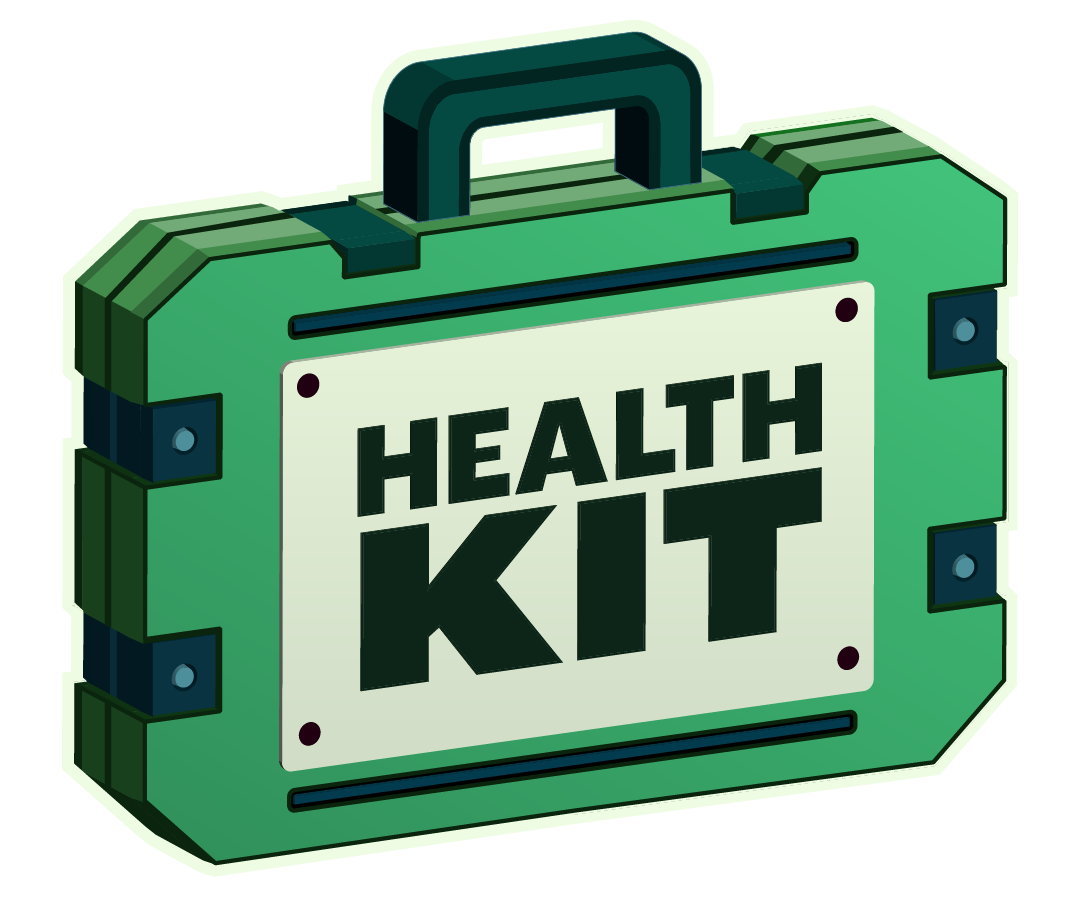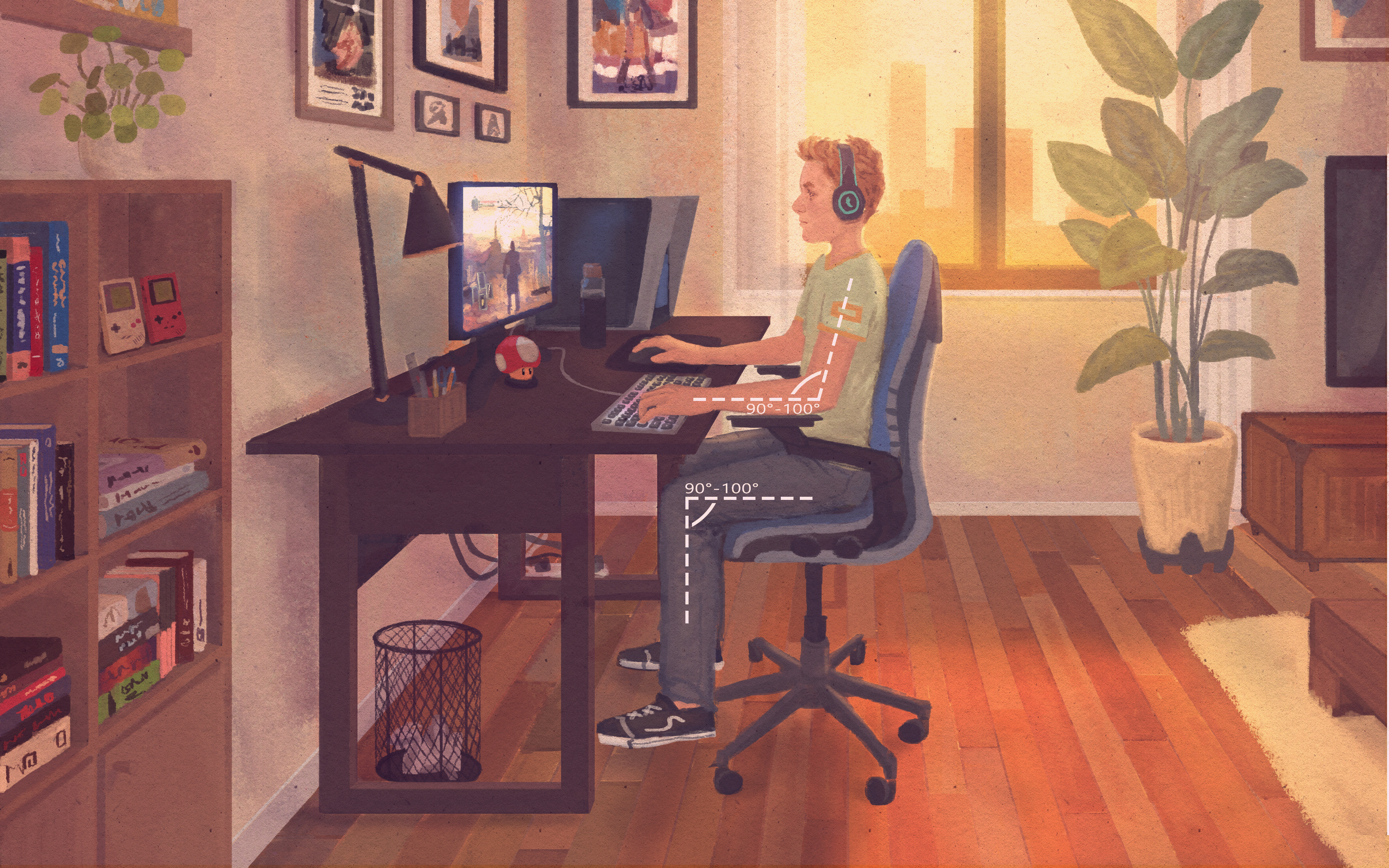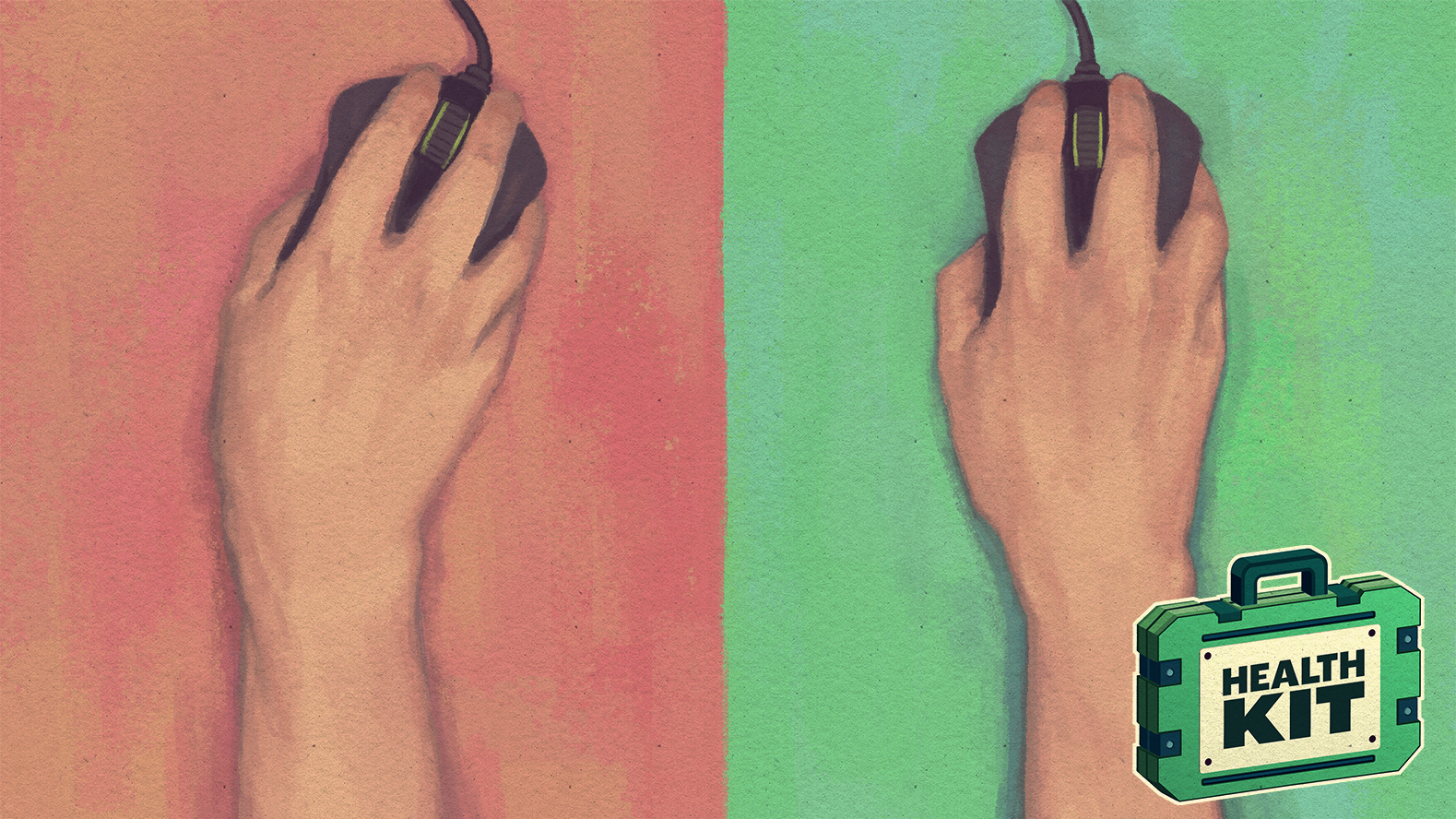5 ways to avoid hurting yourself while PC gaming
Five habits that will help you be more competitive while avoiding pain.
If you’ve existed on the internet for more than a day, you’ve probably seen an admonition to fix your posture, move around more, or drink a glass of water. These aren’t bad suggestions. They’re good ones! But at this point, they’re so often repeated that they're easy to tune out.

Caitlin McGee is a physical therapist with a background in neuroscience and exercise/sport science. She is the co-owner and performance and esports medicine director of 1HP, a company that provides health and performance services to esports players, teams, and organizations. She has been working in esports medicine for 6 years.
In the interests of making something a little less tune-out-able, this article will get a little more precise about what to do to avoid injury, when to do it, and why. And yes, you can hurt yourself while gaming.
Beyond not hurting yourself, there are plenty of other good “whys” for building these habits: better overall health, more pain-free gaming time, and less strain on your body, to name a few. You can think of your body like a heat meter on a weapon with a cooldown mechanic. As you use it, heat/strain builds up. Reaching your heat capacity is equivalent to developing an injury, something that requires you to stop what you're doing in order to recover. You can slow down the rate of heat acquisition by staying hydrated and getting high-quality sleep, you can expand the length of your meter by exercising to improve the capacity of your muscles, and you can implement mini-cooldowns by taking breaks.
More than that, though, making these five things part of your normal routine can actually boost your gaming performance through the 70/20/10 rule.
Introducing the 70/20/10 rule
All the supplements in the world won’t make up for not getting any sleep.
The 70/20/10 rule is a staple of models of performance. When it comes to things that make you better at whatever it is you do—be it soccer, CS:GO, or rock climbing—70 percent of the improvement in your performance comes from consistent mastery of the basics. Those basics are things like adequate sleep, appropriate nutrition and hydration, and regular training to meet the specific demands of your particular activity. 20 percent of the improvement comes from building on those basics of your field with concepts from other fields. For gaming, that might mean using tools that musicians and professional dancers prepare to perform, or learning strategies that air traffic controllers use to stay cognitively alert over long periods of time. The last 10 percent of improvement comes from experimental, novel ideas, or “moonshots”. In certain sports, these are things like using supplements or cryotherapy.
The most important part of this rule is that those 20 percent and 10 percent boosts cannot and do not happen unless you've got the basics under control. All the supplements in the world won’t make up for not getting any sleep, and there’s nothing you can learn from a musician that will make up for the effects of sitting for 12 hours without getting up.
So if you want to not get injured and end up better at what you do in the process, put these 5 habits into practice.
Keep up to date with the most important stories and the best deals, as picked by the PC Gamer team.
1. Do something with your break
When you take a break while gaming, what do you do with it? Do you stay on your PC and check Twitter? Or, for a change of pace, do you pull up Twitter on your phone instead?
Taking a break should mean doing something different. It should let the parts that have been moving and working—fingers, hands, wrists, eyes—rest, and it should let the parts that have been still—legs, hips, trunk--move. If you’ve been sitting, stand up and walk around. If you’ve been gripping tightly, stretch your hands open. If you’ve been staring at a screen, take your eyes off of it.
Use that time to give your body what it needs. Maybe you need to hydrate, maybe you need a snack, maybe you need to stretch, maybe you need to do some quick exercises. That leads to habit number two.
2. Learn to listen to your body
Giving your body what it needs means two things: having a general understanding of what your body needs, and knowing what it specifically needs in the moment.
That general understanding means recognizing that you need, on average, 7-9 hours of sleep a night. It means knowing you need a balance of carbohydrates, protein, and fat in your diet. It means knowing that you need an average of half an hour of physical activity every day, that you should drink water regularly (roughly .5-1.0 oz of water for every lb. you weigh, more precisely), and that bright screens right before you go to bed make it harder to fall asleep.

Health Kit is PC Gamer's coverage of health, ergonomics, and wellness, which is currently being produced with support from AMD. Throughout the rest of 2020, we'll be publishing more health-related articles and videos with advice from specialists. More:
How to configure your mouse so it doesn't hurt you
What should I do if I have wrist pain?
9 simple ways to make your desk healthier and more comfortable
How to sit at a desk with good posture
That general background doesn’t give you the answer to what you should do with one break versus another, how often you should eat, or what balance of carbohydrates, protein, and fat is right for you. That's where listening to your body comes in.
Generally speaking, when things are tight, they should be stretched. When things are stiff, they should be moved. You should eat often enough to not have energy crashes, but just how often and how much that is will depend on how fast you burn your fuel. To get a good night’s sleep, you should have a consistent routine, but what that routine consists of depends on what calms down and relaxes you.
You should also learn the difference between what your body wants and what your body needs. Craving a candy bar doesn’t mean that your body necessarily needs fuel; it might just want the sugar because it tastes good. Just because you're not sore now doesn't mean that sitting for another hour, or two, or three is a good idea; your body needs regular movement to be healthy. Which brings us to point number three.
3. Your best posture is your next posture
If you’re going to maintain one single posture, there is a general ideal: feet planted on the floor, knees and hips at 90 degrees, back upright and supported by a backrest, arms supported at armrests at bellybutton height, hands resting with some support at the base of the hand (not at the wrist). But even that one excellent posture is not nearly as good as consistent movement.
If you’re a fidgeter, congratulations! You're doing great. Keep fidgeting. If you’re the kind of person who can’t sit in the same position for more than 10 minutes, wonderful! Changing your sitting position regularly is a great way to get movement even when you're sitting for long periods. Mix in some standing and walking around during your rest breaks, and you're golden.
If those things aren’t habitual for you, give yourself external cueas to help develop the habit. Set timers on your phone or use a browser app like the Pomodoro Timer to remind you to change position. Over time, consistent, intentional behavior becomes a habit that you no longer have to think about.
4. Check your wrist position
This suggestion is one that comes directly from the 1HP Case Files. A significant portion of the wrist injuries we’ve treated either could have been prevented or were very easily treated with a change of wrist position. In the recent Ask a Medic piece, that wrist position got a special mention.
If your mouse or keyboard hand are constantly tilted to the side like the image on the left, you’re putting your tissues under a lot of unnecessary strain. That strain builds up over time. While your body is highly adaptable and can be prepared for a wide variety of demands, there comes a point when it can no longer adapt adequately. When that happens, injury results. Take the unnecessary strain out of the equation by letting your wrists rest in a neutral position, rather than a tilted one. That way, your body has the capacity to adapt to necessary strains like repetitive movements or long gaming sessions.
This bring us to the final good habit:
5. Build for the strain you'll be under
If you wanted to run a marathon, doing heavy weightlifting every day would be a terrible way to train for it. Similarly, if you wanted to be a powerlifter, only ever doing yoga wouldn’t get you very far.
These are some rather extreme examples, but they have an important underlying principle: Your body can’t be prepared for what it's not exposed to.
When you listen to your body and learn what it needs, you can address those needs.
If you’re going to spend long periods of time gaming, whether you just enjoy long CS:GO sessions or you're training for esports competition, consider what your body needs: core endurance to support your back, postural muscle strength to support your neck, forearm muscle endurance to maintain stable wrist and hand positions, wrist and hand mobility to move through your range of motion quickly, and so on. You shouldn't just train those things while gaming. You can and should also train for what your body needs outside of your gaming time.
Healthy, whole-body activities like walking, running, weightlifting, or rock climbing (to name a few) are generally good for any routine. But part of your exercise time should specifically focus on things like building forearm endurance with low weight, high repetition exercises or building postural muscle support with stretching for your chest muscles and strengthening for your mid- and upper back muscles. (You can find some more exercise tips at the 1HP blog.)
This last point very much ties back to habit number two. When you listen to your body and learn what it needs, you can address those needs. And when you put those habits all together, you’re all set to play more, hurt less.
This article contains information about injuries and injury prevention, but does not constitute specific medical advice. You understand and acknowledge that all users of this website are responsible for their own medical care, treatment and oversight. This article is in no way intended to replace professional medical care or attention by a qualified practitioner and should not be used as a basis for definitive diagnosis or choice of treatment. Future US, Inc does not recommend or endorse any specific tests, products, procedures or opinions that may be provided on any linked websites. Reliance on any information on this website or any linked website is solely at your own risk.



